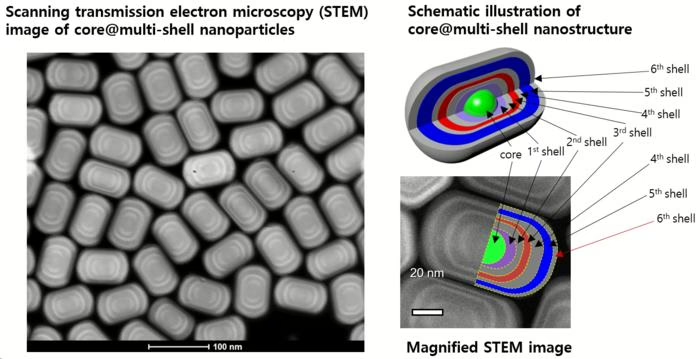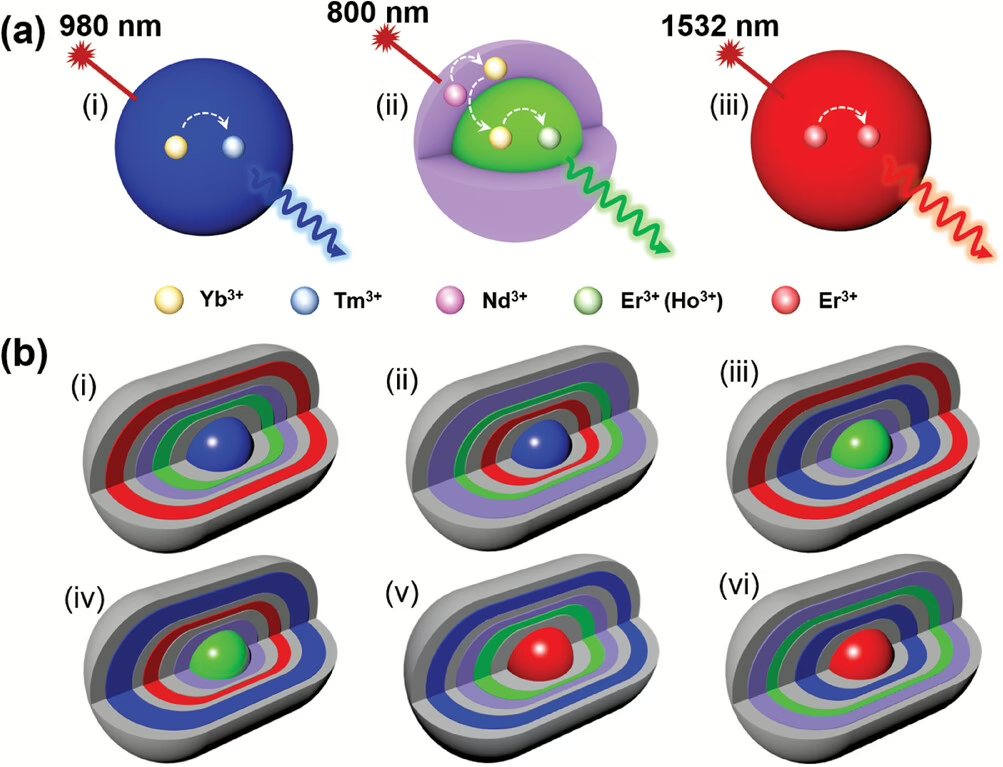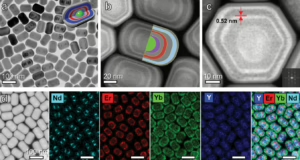Researchers at the Korea Institute of Science and Technology (KIST) have developed upconversion nanoparticle technology that enables a single nanoparticle to emit red, green, and blue light with high color purity and brightness. This work, led by Dr. Ho Seong Jang and his team at KIST’s Materials Architecturing Research Center, represents progress toward true 3D volumetric displays with superior color reproduction. Beyond display applications, these upconversion nanoparticles could potentially serve in security applications to prevent counterfeiting and tampering, as they can create patterns that only become visible under specific NIR light conditions.

The study, published in Advanced Functional Materials, introduces a core@sextuple-shell (C@6S) nanostructure design that produces orthogonal RGB luminescence when stimulated by different near-infrared (NIR) wavelengths. The team found that a green-emitting core coated with a red-emitting inner shell and a blue-emitting outer shell yielded the best results.
The researchers investigated various configurations of the nanostructures before determining that this specific arrangement delivered optimal performance. Their approach allows for tuning of emission colors by controlling both the wavelength and power of the excitation NIR light.
Unlike conventional displays that require special glasses for 3D effects or cause eye fatigue with glasses-free 3D technologies, these upconversion nanoparticles can enable volumetric displays that create images in actual three-dimensional space.
The nanoparticles demonstrate a color gamut performance of 94.2% of the NTSC color space and 133% of the sRGB color space. According to the research paper, this wide color gamut exceeds the capabilities of previous RGB-emitting core@multishell upconversion nanoparticles (the @ symbol in core@multishell or core@sextuple-shell is scientific notation used to describe the structure of the nanoparticles).

To demonstrate practical applications, the researchers incorporated their nanoparticles into a transparent polydimethylsiloxane (PDMS) composite. Using aligned NIR laser beams at 800, 980, and 1532 nm wavelengths, they displayed multicolor images within the transparent material, including text, color diagrams, and animated content.
The research addresses a challenge in the development of advanced display technologies: achieving both high brightness and wide color gamut simultaneously from a single nanoparticle system. With their core@sextuple-shell design, the KIST team has shown that engineered nanostructures can address these previous limitations.
Reference
Shin, S., Lim, J. P., Hong, Y.-K., Kyhm, J., Hong, A.-R., Kang, G., Ko, H., Oh, S. J., & Jang, H. S. (2025). Multicolor Fine-Tunable Upconversion Luminescence from a Single Nanoparticle for Full-Color Displays with a Wide Color Gamut. Advanced Functional Materials, 35(9), 2415687. https://doi.org/10.1002/adfm.202415687

